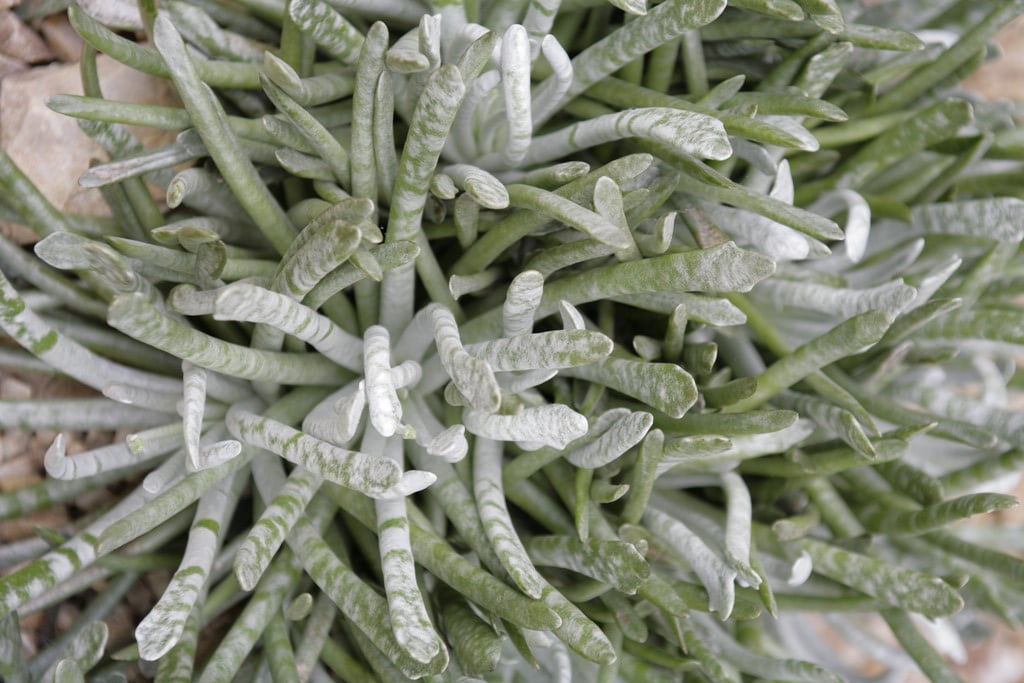Caputia scaposa
An evergreen succulent, with a very short stem producing a cluster of fleshy, finger-like, mid-green leaves, with a patchy, white, woolly covering. In summer, may produce a few, yellow, daisy-like flowers on thin, upright stems

Buy this plant
Size
Ultimate height
0.1–0.5 metresTime to ultimate height
2–5 yearsUltimate spread
0.1–0.5 metresGrowing conditions
Moisture
Well–drainedpH
Acid, Alkaline, NeutralColour & scent
| Stem | Flower | Foliage | Fruit | |
| Spring | Green Grey Silver | |||
|---|---|---|---|---|
| Summer | Yellow | Green Grey Silver | ||
| Autumn | Green Grey Silver | |||
| Winter | Green Grey Silver |
Position
- Full sun
Aspect
South–facing or West–facing
Exposure
Sheltered Hardiness
H3Botanical details
- Family
- Asteraceae
- Native to GB / Ireland
- No
- Foliage
- Evergreen
- Habit
- Clump forming
- Potentially harmful
- All parts of the plants are toxic. Wear gloves and other protective equipment when handling
- Genus
A small genus of flowering succulents, native to South Africa, with clusters of silvery-white to green fleshy, cylinder-shaped leaves. Drought-tolerant and may produce daisy-like bright yellow flowers on long stems above the foliage
- Name status
Correct
How to grow
Cultivation
Grow under glass in peat-free, loam-based compost with extra grit. Water moderately during the growing period and reduce water in the winter months, keeping the soil barely moist. See hardy cacti and succulent cultivation
Propagation
Propagate by semi-ripe stem cuttings in late summer
Suggested planting locations and garden types
- Houseplants
- Conservatory and greenhouse
Pruning
No pruning required
Pests
May be susceptible to aphids and glasshouse red spider mite
Diseases
Generally disease-free
Get involved
The Royal Horticultural Society is the UK’s leading gardening charity. We aim to enrich everyone’s life through plants, and make the UK a greener and more beautiful place.